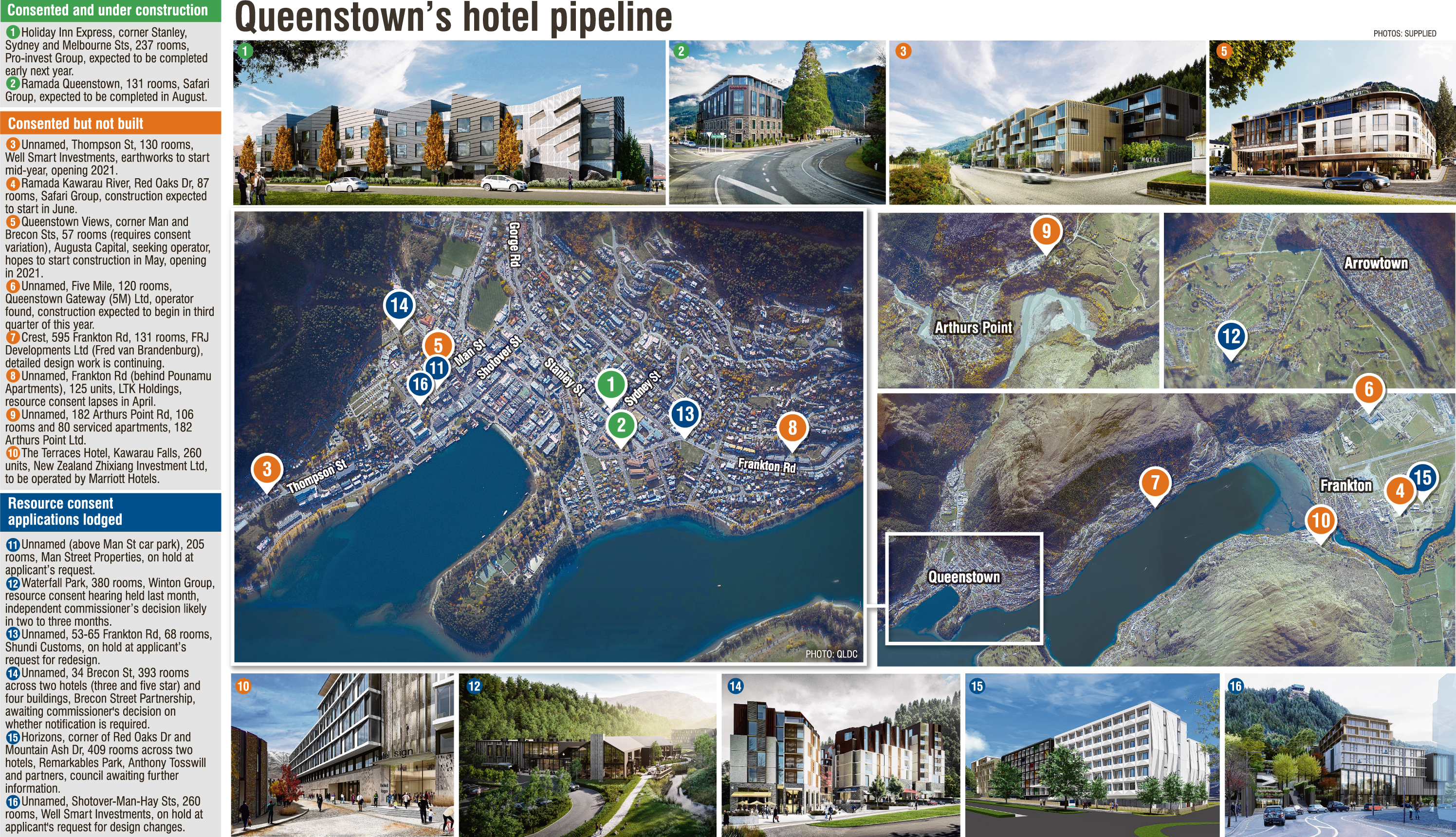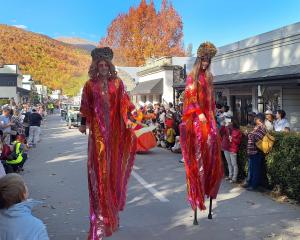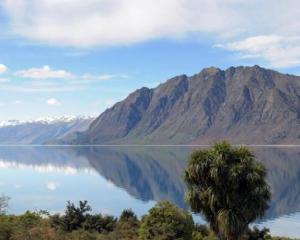
The numbers do not lie. In the wider Queenstown area, council data shows more than 3000 hotel rooms are either under construction (two hotels, 368 rooms), consented but not yet built (eight, 1016 rooms) or in the consenting process (eight, 1715 rooms).
If anything, the numbers are an understatement. Colliers tourism and development broker Barry Robertson says Queenstown Lakes District Council information does not include several consented hotel sites that have been sitting around for some years.

Mr Robertson said the surge in hotel proposals in the resort was the product of "huge" growth in visitor numbers over the past five years.
The rising demand for accommodation had driven up occupancy rates and room rates to "match some of the major cities in Australia".
But that had yet to be reflected in a major boost to the resort’s hotel capacity, and only 367 new rooms had hit the market, from five projects, in the past four years.
The biggest reason for the bottleneck was the long lead times involved — securing a site, finding an investor, settling on a design, getting it consented and then the building and fit-out.
"If you bought a site today, it would be three and a-half to five years, minimum, before you opened the doors."
Some of the parties holding consents simply did not have the skills or industry connections to finance and manage their projects, he said.
Those who had got hotels over the line in the past four years had some form of competitive advantage.
Either they already owned the site, operated their own building company, or had the capacity to carry out all facets of the development in-house.
"It’s fairly hard for someone who doesn’t have any of those connections who just buys a site and thinks ‘Well I might build a hotel’.
The fact that many well-known national and international hotel brands wanted to operate in Queenstown was irrelevant.
"It’s very easy to find an operator at the moment — they’re very keen to get in. The hard part is finding an investor.
"You need someone with $50million-$60million." Not everyone wanted to build straight away, he said.
Some of those with consented sites were investors — often from overseas — who had paid cash for what they regarded as a strategic site and were "taking a long-term view of Queenstown and not rushing into a development".
Also contributing to the bottleneck were the limited availability of builders, rising construction costs and the complexity of developing hotels in central Queenstown.
In the town centre and its fringes, it was usually necessary to aggregate several smaller sites and go through a time-consuming consenting process.
Many potential town centre sites were on sloping land with engineering challenges.
Those difficulties had contributed to a "paradigm shift" in the resort’s hotel scene, he said.
The focus of development had moved away from the town centre, and east to the fast-growing Frankton Flats and Remarkables Park zones, where about 40% of consented projects were located.
Out there, developers or investors could buy a level, consented site and go straight to the design process.
"Traditionally, in Queenstown you’ve always had a gap between the cost and value, because you haven’t been able to generate enough business to generate a return on the development cost.
"Now, with high occupancies and room yields, and if you get a site — say a flat site at Remarkables Park with no big challenges — there’s almost a value above cost.
"We haven’t seen that for the 35-odd years I’ve been here."
Mr Robertson said in addition to the two hotels now under construction on opposite sides of Stanley St — a Holiday Inn Express and the Ramada Queenstown — another five projects could get started in the next two to three years.
"I don’t think we have the building resources to do a lot more than that."
Advertisement













